1980's - The End of the World....As We
Knew It
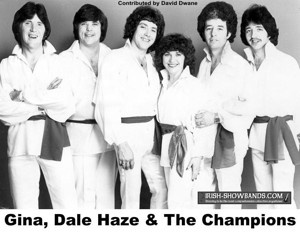 I added the tag "as we knew it" to this section
because although the 80's saw the final years of the ballroom
circuit that had exploded in response to the popularity of the
showbands, but sagged in the declining decade of the 1970's, the
world didn't end for all the bands. Those that could morph into
another form did so, some successfully, but others to no avail. The
industry underwent another major makeover, finally ending the 30
year reign of the "showbands" that had started in the mid to
late 1950's and lasted until the early 1980's.
I added the tag "as we knew it" to this section
because although the 80's saw the final years of the ballroom
circuit that had exploded in response to the popularity of the
showbands, but sagged in the declining decade of the 1970's, the
world didn't end for all the bands. Those that could morph into
another form did so, some successfully, but others to no avail. The
industry underwent another major makeover, finally ending the 30
year reign of the "showbands" that had started in the mid to
late 1950's and lasted until the early 1980's.
With the 80's came a new phenomenon that had
been quietly, but steadily growing during the later 70's--the Bar Extension
(also called a Bar Exemption). As the crowds continued to
dwindled in the major ballrooms, Ireland's hoteliers and publicans were looking
for ways to make ends meet during the weak tourist months of the
winter (and sometimes the summer as well).
Also, back in those days,
weddings were afternoons affairs, with the bride and groom usually
departing the hotel, with balloons and tin cans trailing behind
around 5 or 6 pm. Plenty of time to clean up the ballroom and get
ready for the "dance" which would start around 10 pm until 2 am. It appears there was a "loophole" in the law concerning the serving of alcoholic beverages
after normal hours (Irish pubs closed at 11:00 during the week and 10 p.m.
on Sundays). However, if they were serving a "meal," the law allowed
hotels to continue serving drinks until 1 a.m.
Traditionally, extensions had been reserved for
special occasions, or festivals
(carnivals) usually held throughout the
Spring and Summer months. Rural
communities would pitch a massive tent and hold a 10-14 day long
"carnival" during which time the pubs would be allowed to serve
later and the population for miles around would come to enjoy tugs
of war, costume contests and all manner of family entertainment. Hotels realized they could extend their drinking hours by
serving a meal--a law that I personally feel was designed to allow
annual dinner
dances to serve alcohol later than normal. When nobody complained,
the hoteliers went to town.
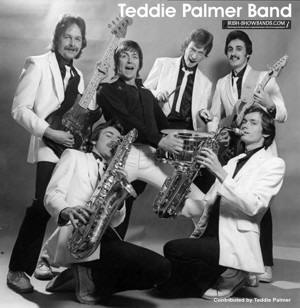 Hotel ballrooms across the country started
serving up greasy plates of chicken and chips and a new form of
entertainment was born. The first to feel the brunt of this impact
were the ballrooms and the smaller bands. Because ballrooms had no
license to serve alcohol (having never seen the need for it), they
were shunned by dance goers. Additionally, most of the
ballrooms had been built with a minimum of creature comforts, making
them even less appealing than a smaller, cozy hotel ballroom.
Hotel ballrooms across the country started
serving up greasy plates of chicken and chips and a new form of
entertainment was born. The first to feel the brunt of this impact
were the ballrooms and the smaller bands. Because ballrooms had no
license to serve alcohol (having never seen the need for it), they
were shunned by dance goers. Additionally, most of the
ballrooms had been built with a minimum of creature comforts, making
them even less appealing than a smaller, cozy hotel ballroom.
Smaller venues also meant smaller money which caused many bands to
downsize from 7 or 8 members to five or six piece outfits in an
effort to preserve their incomes. The technology that created the
synthesizer also had the effect of making brass less of a necessity
and many trombone and trumpet players found they were no longer
needed. For some reason sax players seemed to hold their own in the
age of synths. It also totally destroyed the traditional Farfisa
organ which had been a staple of the 60's sound.
As a result, for a time the bands were able to continue on with as
few as five members, a good synth player and a great dance
programme.
As the big ballroom dates dried up, the most
successful bands were forced to move to the smaller hotel venues, forcing
out the lesser known bands almost entirely. Many band managers started
promoting dances themselves in order to have something to exchange with other
managers. Successful managers took on smaller bands, and were able
to use the promise of a date with their more popular act as an incentive
for promoters to book their lesser known band(s). The strategy was a
successful, but only for a time.
All the news wasn't bad.....
At around this same time in the late seventies
and early 1980's, other factors had a direct influence on the
showband scene. In November, 1978, RTE2 television went on the air
with a flourish and the promise of more exposure for Ireland's home
grown talent. A few months later, in May, 1979, RTE2 radio hit the
airways. The doubling of programming over a six month period created
a great demand for all types of "product." TV shows like
SBB Ina Shui and Non-Stop Pop provided regular outlets
for Irish bands in addition to the all important "Late Late Show"
spot with legendary host, Gay Byrne.
At the same time, the recording industry in
Ireland was also changing. Making records had always been limited to
the most successful bands (or those with heavy financial backing).
The only "real" recording studios were in Dublin and their hourly
rates were beyond the reach of most new bands. However, by the end of the 1970's, less
expensive alternative studios (first offering 8 track recording, but
soon expanding to 16 track) started opening around the country. At
rates like £10 an hour, even the smallest bands could afford to make their own
record for the cost of a good night's pay.
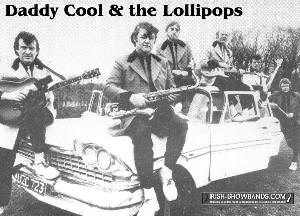 In much the same way that the Royal Showband opened the floodgates for showbands making records in the
early 60's, another band did the same for Irish pop in 1978.
Bagatelle, a little known Dublin "pop" group released a song penned
by lead singer Liam Reilly called Summer In
Dublin and the rest, as they say, is history! Not only
was the record a bona fide smash hit in Ireland, it was possibly the first
time an Irish based "pop" band had been so successful in Ireland,
and then chose to remain in the country. Years earlier, Thin Lizzy had
established itself with Whiskey In The Jar, while still based
in Ireland, but immediately went to London.
In much the same way that the Royal Showband opened the floodgates for showbands making records in the
early 60's, another band did the same for Irish pop in 1978.
Bagatelle, a little known Dublin "pop" group released a song penned
by lead singer Liam Reilly called Summer In
Dublin and the rest, as they say, is history! Not only
was the record a bona fide smash hit in Ireland, it was possibly the first
time an Irish based "pop" band had been so successful in Ireland,
and then chose to remain in the country. Years earlier, Thin Lizzy had
established itself with Whiskey In The Jar, while still based
in Ireland, but immediately went to London.
Suddenly, there was a new opportunity...Irish bands could "make it" with original music, while
staying at home. So, although bands like Horslips, Thin Lizzy, Van
Morrison, Rory Gallagher, and others had hits before, this time
it seemed different.
These factors: inexpensive recording studios,
additional outlets for home grown records, and a new air of
acceptance for original Irish based music, had a huge impact on the
entertainment scene in Ireland and jump-started a new era of
creativity. In fact, U2's lead singer, Bono, has openly commented on
the impact Bagatelle's success had on the band in its early years. Along with the influence of British punk and
new wave music, Ireland's rock scene enjoyed a period of
experimentation and creativity that produced some of the country's
finest exports including U2, Stiff Little Fingers,
and many more that followed.
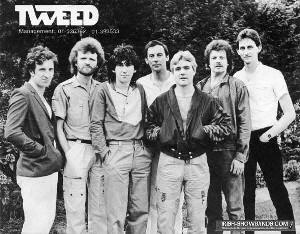 But back to the discos.
But back to the discos.
It didn't take long for
hoteliers to realize that it wasn't the bands that were attracting
the crowds, but the booze. One by one, hotels redesigned their
ballrooms to become "Niteclubs," the final nail in the coffin. Since
patrons followed the drink, and a DJ was much cheaper than a five to seven
piece band, in a few short years, live music all but disappeared and
many bands called it quits in the early to mid 1980's.
This trend seems to hit the pop bands first and
hardest. Usually their first move would be to cut the number of
musicians down from seven to six to five in an attempt to play the
smaller gigs. Eventually though, it became almost impossible for a
live band to make a living "on the road" in Ireland and by the late
1980's the live band dancing scene in Ireland was more or less gone. Despite these changes, though, some bands did
manage to survive and even flourish.
Keep It Country
As the disco took over the "pop" dance scene, country music
was less
impacted by the disco trend and many bands were able to keep going.
Perhaps the biggest reason was that "jiving" was the form of dancing
favoured by country dance goers and the discos shunned this type of
music. Additionally, cabaret offered other
opportunities for artists that could provide a wide range of
entertainment including some comedy and banter from the stage.
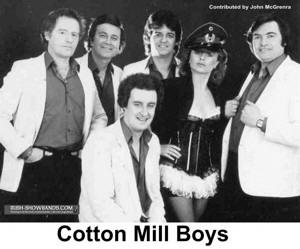 In researching for this article, I came across
an interesting webpage. It is taken from a Dail Eireann debate held
on April 26, 1988 under the title, "Intoxicating Liquor Bill, 1988:
Second Stage."
In researching for this article, I came across
an interesting webpage. It is taken from a Dail Eireann debate held
on April 26, 1988 under the title, "Intoxicating Liquor Bill, 1988:
Second Stage."
(Debate)
The basic gist of the debate was whether or not restaurants should
be allowed special liquor licenses to be able to serve alcohol with
meals, given the growing tourism industry in Ireland.
S. Barrett interjected, "Before
moving on to deal with the various sections contained in this Bill,
I would ask the Minister if he has any proposals to allow for the
issue of a limited number of exemptions for ballrooms. Over the past
number of years discos appear to have taken over from the
traditional type of ballroom. I am told that ballrooms which, after
all, are capable of providing a good deal of employment, be it
through the staff engaged in the actual running of the ballroom or
the bands engaged for the evening, find it extremely difficult to
compete with discos. I regret the demise of the traditional type of
ballroom which for many years provided a very important amenity,
particularly in rural Ireland. I do not think anybody would like to
see this trend continue and I would ask the Minister to give this
matter serious consideration."
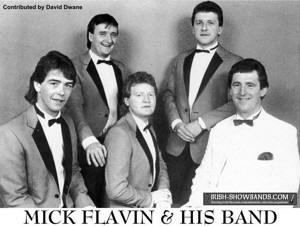 Even though a letter had been received from the
Irish Ballroom industry, which they quote as only numbering 21 or 22
ballrooms left in 1988 asking for
special consideration, nothing was done. Surely it was too little,
too late.
Even though a letter had been received from the
Irish Ballroom industry, which they quote as only numbering 21 or 22
ballrooms left in 1988 asking for
special consideration, nothing was done. Surely it was too little,
too late.
As the 1980's ended, so too did the once proud
ballroom and showband industry that had provided a wealth of
entertainment to the Irish public for over 30 years. Anyone born
between 1930 and 1970 has memories of a first kiss, a stolen
moment, a darkened corner or a shared mineral while the music of
Ireland's showbands swirled in the background. Unlike many purists
who feel the era ended in the early 70's, I suggest that even though
it went through many changes from decade to decade, the "era of the
Irish showbands" actually extended from about 1955 up until 1985.
Maybe it is because I wasn't old enough in the sixties to be part of
the "real deal."
However, having played in some of the same
ballrooms that enjoyed massive crowds to the likes of Dickie and the
Miami, Eileen Reid and the Cadets, The Royal, The Sands, The Clipper
Carlton, The Dixies, and so many many more, it gives me great
pleasure just to think that I was a part of a very special period in
Ireland's musical history. Remembered today more for nostalgia than
anything else, the era of The Irish Showbands was unique and will
never be seen again!
Today, there are people who would point to a
still surviving dance scene for live bands in Ireland. Artists like
Mike Denver, Nathan Carter and Robert Mizzell are still able to make a
very good living playing the circuit of
dances around the country. However, almost all of these dances
feature country bands and take place in hotels and most of the dancers themselves have been jiving for
years. An entire generation of young people in Ireland have grown up
listening to records, then CD's and now mp3 files on their iPods.
Although in recent years the idea of live music had
almost become a distant memory, it is finally making a comeback in the second decade of the 21st century.
Click on one of the genres below to learn more.

 I added the tag "as we knew it" to this section
because although the 80's saw the final years of the ballroom
circuit that had exploded in response to the popularity of the
showbands, but sagged in the declining decade of the 1970's, the
world didn't end for all the bands. Those that could morph into
another form did so, some successfully, but others to no avail. The
industry underwent another major makeover, finally ending the 30
year reign of the "showbands" that had started in the mid to
late 1950's and lasted until the early 1980's.
I added the tag "as we knew it" to this section
because although the 80's saw the final years of the ballroom
circuit that had exploded in response to the popularity of the
showbands, but sagged in the declining decade of the 1970's, the
world didn't end for all the bands. Those that could morph into
another form did so, some successfully, but others to no avail. The
industry underwent another major makeover, finally ending the 30
year reign of the "showbands" that had started in the mid to
late 1950's and lasted until the early 1980's.  Hotel ballrooms across the country started
serving up greasy plates of chicken and chips and a new form of
entertainment was born. The first to feel the brunt of this impact
were the ballrooms and the smaller bands. Because ballrooms had no
license to serve alcohol (having never seen the need for it), they
were shunned by dance goers. Additionally, most of the
ballrooms had been built with a minimum of creature comforts, making
them even less appealing than a smaller, cozy hotel ballroom.
Hotel ballrooms across the country started
serving up greasy plates of chicken and chips and a new form of
entertainment was born. The first to feel the brunt of this impact
were the ballrooms and the smaller bands. Because ballrooms had no
license to serve alcohol (having never seen the need for it), they
were shunned by dance goers. Additionally, most of the
ballrooms had been built with a minimum of creature comforts, making
them even less appealing than a smaller, cozy hotel ballroom.  In much the same way that the Royal Showband opened the floodgates for showbands making records in the
early 60's, another band did the same for Irish pop in 1978.
Bagatelle, a little known Dublin "pop" group released a song penned
by lead singer Liam Reilly called Summer In
Dublin and the rest, as they say, is history! Not only
was the record a bona fide smash hit in Ireland, it was possibly the first
time an Irish based "pop" band had been so successful in Ireland,
and then chose to remain in the country. Years earlier, Thin Lizzy had
established itself with Whiskey In The Jar, while still based
in Ireland, but immediately went to London.
In much the same way that the Royal Showband opened the floodgates for showbands making records in the
early 60's, another band did the same for Irish pop in 1978.
Bagatelle, a little known Dublin "pop" group released a song penned
by lead singer Liam Reilly called Summer In
Dublin and the rest, as they say, is history! Not only
was the record a bona fide smash hit in Ireland, it was possibly the first
time an Irish based "pop" band had been so successful in Ireland,
and then chose to remain in the country. Years earlier, Thin Lizzy had
established itself with Whiskey In The Jar, while still based
in Ireland, but immediately went to London.  But back to the discos.
But back to the discos. In researching for this article, I came across
an interesting webpage. It is taken from a Dail Eireann debate held
on April 26, 1988 under the title, "Intoxicating Liquor Bill, 1988:
Second Stage."
In researching for this article, I came across
an interesting webpage. It is taken from a Dail Eireann debate held
on April 26, 1988 under the title, "Intoxicating Liquor Bill, 1988:
Second Stage."  Even though a letter had been received from the
Irish Ballroom industry, which they quote as only numbering 21 or 22
ballrooms left in 1988 asking for
special consideration, nothing was done. Surely it was too little,
too late.
Even though a letter had been received from the
Irish Ballroom industry, which they quote as only numbering 21 or 22
ballrooms left in 1988 asking for
special consideration, nothing was done. Surely it was too little,
too late.